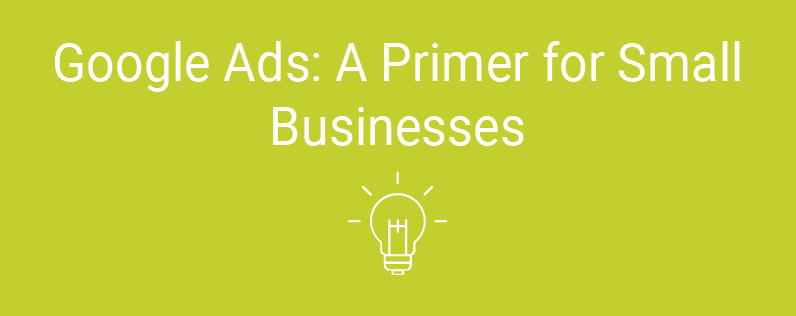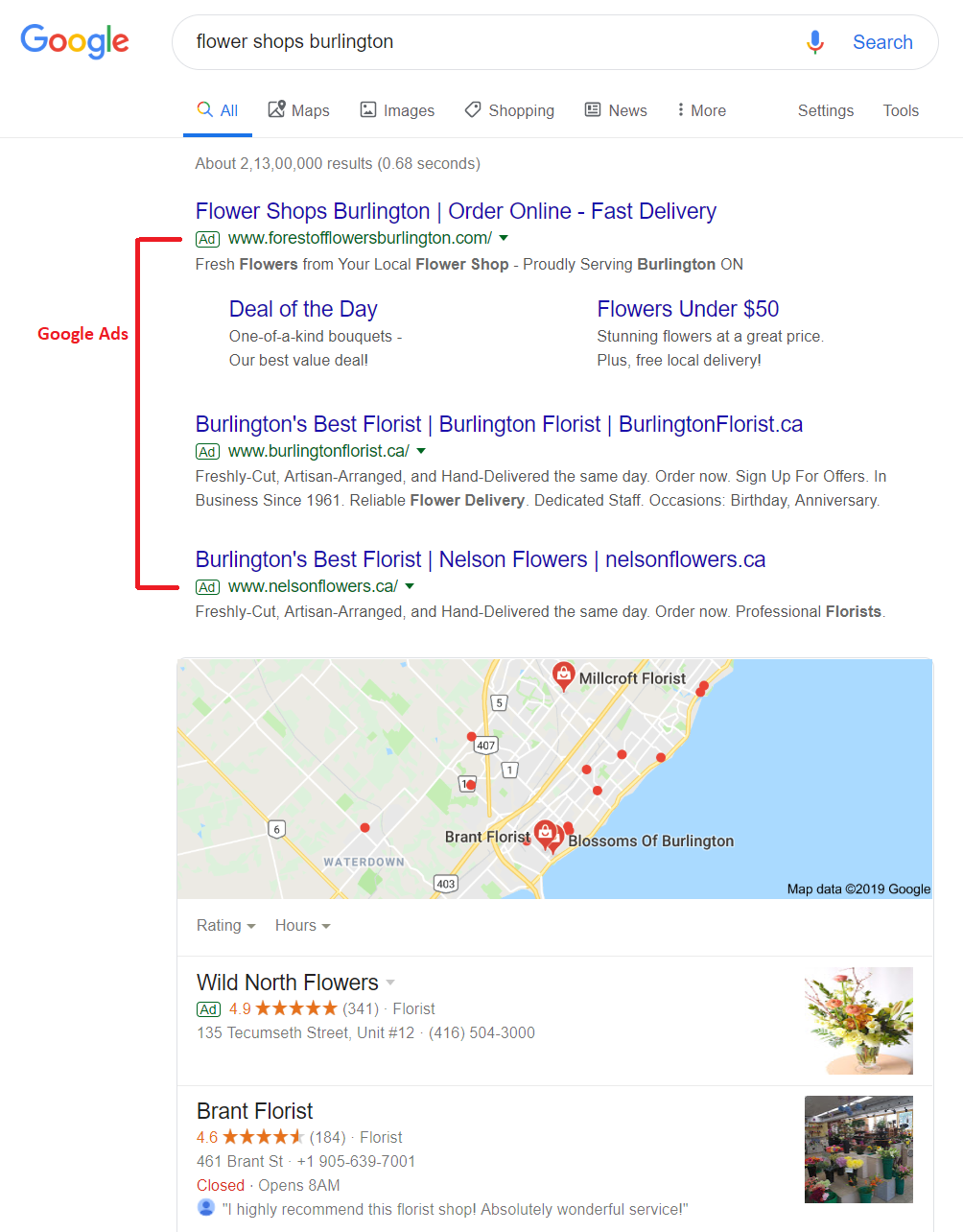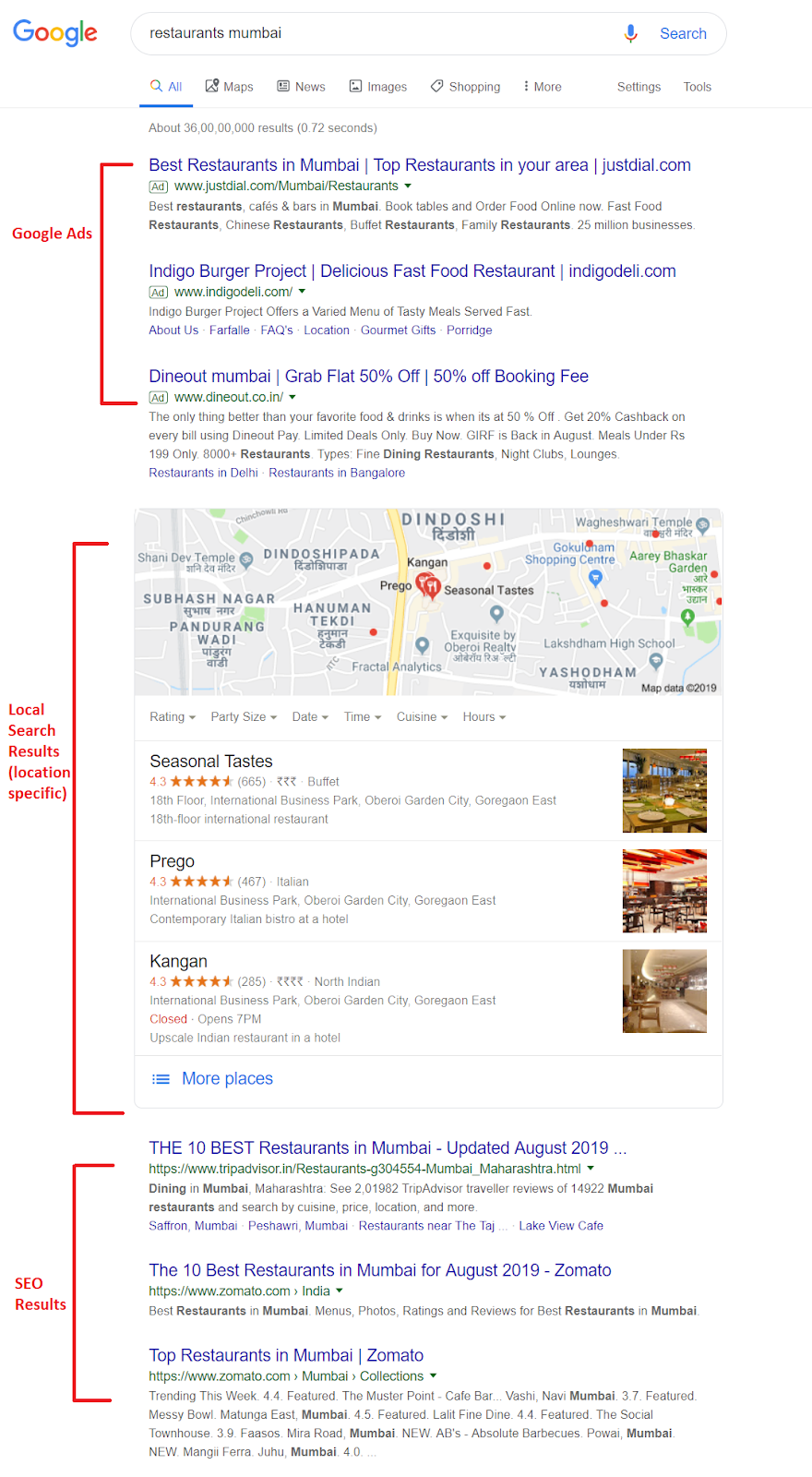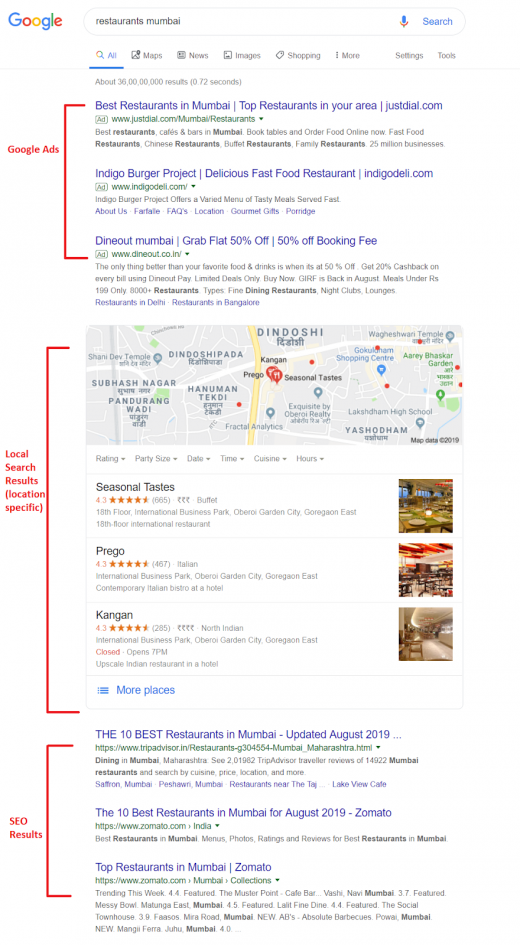Google Ads: A Primer for Small Businesses

There’s a lot of noise out there about Google Ads, and it can be overwhelming.
With a higher return on investment than other forms of advertising, Google Ads can be a powerful tool for small businesses looking to grow their revenue. But technical jargon, endless search results, and cluttered marketing myths make it difficult to grasp the fundamentals.
In this post, I’ll break it down simply and help you understand the role that Google search ads play in the small business marketing mix.
What are Google Ads?
Put simply, Google is a search engine, and it allows you to create and run advertisements, called Google Ads, that are highly effective for many businesses.
Google Ads are the business listings that show up at the top of the page after you type a search term. They have the word ‘Ad’ before the website address to distinguish them from the organic search results.
Still not sure what I am talking about? Take a look at the example below.
This is what Google Ads look like:
 Google Ads show up at the top of Google search results.
Google Ads show up at the top of Google search results.
Google Ads allow you to bid on specific keywords that are relevant to your business (Don’t worry—we’ll explain the bidding process later in this post). You target people searching for those exact keywords and deliver customized messaging to them.
For example, if you’re a yoga studio and you know that your potential customers are searching “Yoga for muscle building,” you would bid on that search term. This way, when someone types in that phrase, your ad will show up.
How are Google Ads different from paid social advertising?
Google Ads are targeted towards people searching for specific keywords. This makes them intent-driven—you already know that the people seeing your ad are interested in what you offer.
This differs from paid advertising on social channels like Facebook and Instagram. Social ads are delivered within the social feed at a time when people are not necessarily searching for your product or service.
In short—with Google Ads you can directly target people showing intent and interest in what you offer.
How do I pick keywords for Google Ads?
The art of acing Google Ads is choosing the perfect keywords. Google offers a keyword planner, which is a free tool that makes creating and getting the most from your Google Ads extremely efficient. All you need to do is enter a search term—something associated with your business and your offer—and the tool will come back with suggestions of relevant keywords for you.
The Google keyword planner tool also tells you how competitive the keyword is, and the average bid on each keyword.
How do Google Ads and the keyword auction work?
Once you have listed all the relevant keywords that you want to target, you put in your bid on all these keywords.
This is the keyword auction, where Google looks at several factors (more on that in a bit) to determine in what position your ad shows up on Google, compared to others bidding for the same keyword.
In this process, Google looks at the relevance of the search term for your business, the amount you have bid, historical performance metrics for your ads, and the quality score for your ad.
The quality scores evaluate how well your keyword, landing page, and ad copy all correspond to one another.
For example, if you’re a sporting goods business, and you’re creating an ad to sell baseball caps, the landing page, ad copy, and the keyword you choose must all highlight “baseball caps.” Or, to put it another way, if you bid on “baseball caps,” but your landing page and ad copy are about golf clubs, you will not get a very high quality score.
Can a small business use Google Ads to compete against larger, more established brands?
Yes! In fact, you can even outbid other brands by being more relevant and focusing on a smaller target audience.
Start by targeting a small but specific audience group, then be hyper-relevant, keep your efforts more locally-focused, and pick your keywords and audience accordingly. This is your advantage as a small business—you know your local audience better than the larger, more established brands, so you have a better understanding of their needs and buying behaviors.
For example, if you are a small bakery business in Austin, Texas, you want to target the local community. Your ads must show up when people within Austin are looking for bakeries or baked goods. Additionally, you know the local community better than larger established bakeries that may have multiple stores. This allows you to cater to the exact demands of people in your community. For example, maybe there’s a particular pastry or star ingredient that’s a local hit and you can highlight that.
Google Ads also allows you to test keywords, messaging, timing, and audience composition. Over time you’ll know what works best for your business, making you a stronger competitor.
How are Google Ads different from Search Engine Optimization (SEO)?
Google Ads are paid, whereas SEO is free.
With Google Ads, you are paying to pop up as a search result when a customer searches for the goods and services you offer. SEO is a process of refining the website’s content, usability, design, and experience to improve your placement in organic search results.
Google Ads are custom messages created by you that target people searching for the keywords you bid on. SEO, on the other hand, is based on the website content you create. When a customer searches for a keyword, the search engine automatically pulls information from the content on your website to show in the search results.
The organic search results are placed below the Google Ads. In fact, the first few results are Google Ads, followed by local search results depending on the user’s location, and then finally the organic (SEO) results.
Here is a more complete view of a search engine results page:
 Google displays organic SEO results, local results, and Google ads alongside each other on the search results page.
Google displays organic SEO results, local results, and Google ads alongside each other on the search results page.
The way the results are prioritized means that Google Ads are generally more targeted and controlled by a business. The business decides what potential customers will see.
With organic search results, Google determines what customers see as a result of their search.
So what are the key benefits of Google Ads?
Flexibility—you decide when you want to start, stop or pause a campaign, how much you want to spend on it, and what season and audience you want to target.
Testing—you can test many different aspects of your ad campaigns to really understand what works best with your audience.
Control—you have complete control over what information your potential customers see. You also control who sees it, since you’re only reaching out to people specifically searching for what you offer.
More targeted—as mentioned, your ads are more targeted because you’re using the keywords that your audience is searching for.
Intent-driven—you already know that the people who see your ad are interested in what you offer since they are searching for your chosen keywords.
Cost-per-click (CPC)—with Google Ads, you only pay when someone clicks on your ad, making it more budget-friendly for small businesses.
Great ROI—the return on investment is high with Google Ads compared to other types of advertising. According to Google, on an average, advertisers make $ 2 for every $ 1 spent on Google Ads
How much do Google Ads cost?
You choose how much or how little you want to spend. There is no minimum or maximum budget that you have to start with.
To begin with, you can set your budget as low as $ 5 per day, and as you learn and grow, you can increase your budget from there.
Also, considering that the keyword planner tool by Google is free and does a lot of work in making your ads successful, and you only pay when someone clicks on your ad, one can say that Google Ads are not very expensive. And, they can have an impressive return on investment (ROI), so with the amount you do spend, chances are you’ll make much more than that in the end.
How do you make money from Google Ads?
How you monetize Google Ads depends entirely on your business goals.
Google Ads can help you get more leads, generate more revenue, and drive traffic to your website. You can track revenue with Google Ads to ascertain your ROI.
You can also create ads to get more people to sign up for your newsletter, buy your products, or book your services. Depending on the goal you set, you can create custom messaging to drive people to take the desired action.
Are Google Ads worth it for small businesses?
Yes, they absolutely can be.
Google Ads are completely intent-driven so you know that the right people are looking at your ads. Small businesses know their local audience, making it easier for them to target the right people, and choose the right keywords. Also—since there’s no restriction on how high or low you set your budget, you can completely control your spending.
Additionally, you have the option to stop or pause a campaign, adjust it, or even test it according to a change in season, need, or audience demand.
Is it easy to create Google ad campaigns?
It’s not difficult, but it may take some time to get the hang of it.
Get more and do more with Google Ads
Google Ads has a lot of benefits and can accelerate your business goals. Whether you’re trying to generate more leads, increase sales and revenue, or drive more traffic to your website—this is the perfect advertising solution.
You don’t need to be a marketing expert to get the most from Google Ads. You know your audience and you know what they’re looking for, so go get them!
Try creating your first Google Ads campaign today and see what it does for your small business.
Business & Finance Articles on Business 2 Community
(25)


